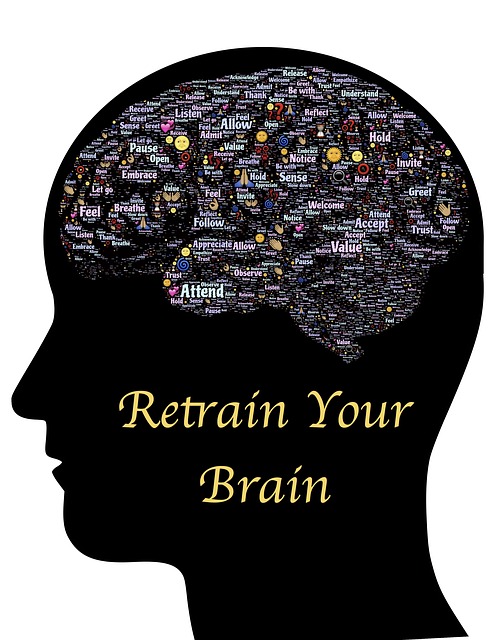Jon Kabat-Zinn, mindfulness teacher and creator of MBSR, recently presented a workshop during the Mindfulness & Compassion Week (June 6- 13, 2021). Jon’s focus was on mindfulness in the digital age. He addressed both the downside and upside of digitisation and noted particularly the benefits accrued through online communication during pandemic-related lockdowns. In this post, I want to focus on the downside of the digital age – the challenge it poses to our ability to pay attention on purpose , non-judgmentally, in the present moment.
Jon was especially concerned about the manipulation of our minds and attention through social media and other online communication channels. He drew on the work of the Centre for Humane Technology to explore both the human costs of the digital age. He strongly encouraged exploration of this website and its podcasts along with the film, The Social Dilemma, which he suggested should be viewed multiple times.
The downside of the digital age – the loss of attention, consciousness, and awareness
Jon maintained that in the digital world it has become hard to discriminate between what is true and what is false, between what is fact and what is myth. He argued that we have “lost agency” and levels of decision making through social media and related digital technologies and the embedded “surveillance capitalism”. The language we encounter is manipulative and “propels us out of the moment” – we lose our grounding in the present moment. We are told that a video is “a must watch”, we are warned that we will “miss out” if we do not take a particular action and we are enticed to act to gain “rewards”, some of which are spurious. Jon points out that the incessant barrage of information/misinformation and constant attempt to capture our attention leads to dysregulation in our life, adversely affecting our breathing, eating and sleep.
He argued that the greatest need for humanity today is to address the “loss of awareness” – the lack of consciousness that we are losing control over our minds, destroying our environment, and wrecking the lives of people through perpetual, disruptive advertising that attempts to capture our attention and steel our focus. He encouraged us to increase our awareness of the impacts of the digital age so that we can live our life more fully in the present moment and not be caught up in the mainstream culture of acquisition (vs savouring), of form (vs substance), of envy (vs gratitude), and of self-absorption (vs compassion).
Our diverted attention
The Centre for Humane Technology works tirelessly to help us to develop the awareness of the downside of the digital age, especially through their insightful podcast series, Your Undivided Attention. One example of this powerful message is the podcast, When Attention Went on Sale, which features an interview with Tim Wu, author of The Attention Merchants: The Epic Struggle to Get Inside Our Heads.
Tim maintained that the “commodification of our attention” actually began with the introduction of ad-supported newspapers. The readers became the product, the focus shifted from a dissemination of the “truth model” to that of the “attention model” and we became the “puppets” of attention-grabbing advertising and media. The content focus shifted to what shocks (death and violence), what titillates (sexualisation) and what raises curiosity (misleading headings). The media exploited emotions of fear, scepticism, greed, and envy. Early on, advertising posters with the work of famous artists were deployed throughout Paris as a means to invade people’s attention. They were eventually removed when Parisians complained that they invaded their attention and were a blight on the landscape.
Commercial interests now drive the competition for our attention and television offers “precise marketing” through creating an “emotional resonance” with the viewer, heightened by the visual medium. Human attention is being harvested in the pursuit of “economic and attention power” – attention gained by TV stations leads to higher ratings which leads to more advertising and revenue. Wu describes this process as the “harvesting of human consciousness” in an environment that is scarily unrestrained and unregulated. We can observe the resultant imbalance in information dissemination when we notice that a TV Program designed to provide an “alternative perspective” on the news of the day devotes more time to advertisements (reinforcing mainstream culture) than to alternative commentary during a one-hour program. Viewers of ad-driven TV stations often engage in “channel surfing” to evade ads but this leads to what Jon calls “fragmented attention”.
Our attention is up for sale through Google ads where buyers of ad exposure in search results actually bid for the right to appear higher in the listed results. While quality (relevance, originality, and depth of content) is an espoused determinant of ranking, price plays a major role and advertisers are encouraged to “outbid” each other for our attention.
Social media has had a significant impact on attention distraction and distortion. This has accelerated with the emergence of “selfies” (obsession with self over being present to the moment and location), the commodification of bodies (via private membership of TikTok for example), and “follower ads” on LinkedIn and other online advertising media. The concept of “friends” (as per Facebook) has moved from “a bond of mutual affection” to that of a relatively disinterested follower and “friends” are purchased via online marketing organisations to boost one’s social presence. Positive product reviews by friends are harvested to build Google rankings – companies even pursue us relentlessly to gain our “review” (even when they have misled us about a product offering).
The game is all about grabbing “eyes on the page” (and Google, for example, measures pages visited, time spent on a page, and percentage of people who view only the “landing page” as they “surf”). There is now software available to track your eyes as they view a webpage (with eye movement displayed via a heatmap). We are becoming conditioned to providing those “eyes on the page” – “pop-ups” encourage us to register for continuous information/ad exposure and whenever we have to spend time waiting, our default action is to reach, unthinkingly, for our mobile phone.
The concept of “social influencers” has emerged to identify influential people who have the power to affect our buying decisions and who work in collaboration with brands who use their influence to persuade us to make purchases. The source of the influencer’s power (e.g., celebrity status, expertise, sexual appeal) and the relative extent of their power (how many followers) is variable. In consequence, influencers are viewed by brands as “social relationship assets” of variable worth.
Mobile phones are increasingly part of everyday life for people enabling constant access to the Internet, social media and to disruptive “notifications”. Some people become obsessed with “keeping up-to-date” via social media and constantly access their phones (even sleep with them). Others feast on the news with all its inherent biases, selective reporting and tailored reinforcement of the receiver’s views, perspectives, and politics.
Supermarkets employ email-based rewards systems built around receipt scanning and identification of individuals’ typical shopping basket. They also attempt to widen purchasing choices by introducing bonus-boosted products not normally purchased by an individual. Buyers can be “led” to purchase products they do not need or want. The rewards system works on the principle of intermittent reinforcement employed by gambling machines where ongoing “jackpots” are given to entice the gambler to continue spending.
In summary, in a digital world there are so many mechanisms at play to capture our attention and multiple drivers such as profit, profile enhancement and social influence to sustain these constant, concerted efforts to distract us and divert our attention. This makes it increasingly difficult to be mindful in our everyday life unless we take conscious steps to develop mindfulness to counteract the adverse impact of these online media.
Reflection
Jon also discussed the many benefits of the digital age and this will be the subject of a subsequent post. Whether we accrue these benefits or suffer the adverse effects of the digital age, comes down to our own choices and behaviour.
Jon emphasised the need to be very aware of the impact of digitisation on our behaviour. He suggested, for instance, that we should be particularly mindful of our mobile phone use and its potential adverse effects on our quality of life and our relationships.
Jon maintained that the discipline of daily mindfulness meditation can flow over into every aspect of our lives including our use of digital media. As we grow in mindfulness, we can develop increased self-awareness, improved self-regulation, and enhanced insight into the adverse impacts of our own behaviour with respect to digital media.
Self-reflection on our use of digital media and its impacts on our relationships, on our level of personal stress and on our ability to concentrate and be productive, can provide the impetus for behaviour change. The following reflective questions could serve as a starting point:
- To what extent is your focus on social media reducing your span of attention?
- How often is access to your mobile phone your default behaviour when you have to spend time waiting?
- How often are you distracted by social media when in conversation with an individual or a group?
- To what extent does social media determine the content of your conversations, e.g., how often do you share rumours, myths, scandals, and what “celebrities” are doing?
- How much do you rely on social influencers for your purchase decisions?
- To what extent does the time you spend on social media limit your time spent in nature, experiencing its numerous benefits?
- Does your social media presence contribute to the quality of life of other people?
_________________________________________
Image by wei zhu from Pixabay
By Ron Passfield – Copyright (Creative Commons license, Attribution–Non Commercial–No Derivatives)
Disclosure: If you purchase a product through this site, I may earn a commission which will help to pay for the site, the associated Meetup group, and the resources to support the blog.









